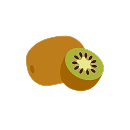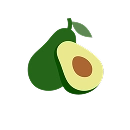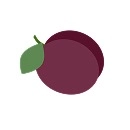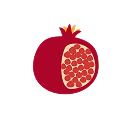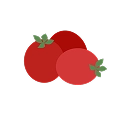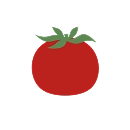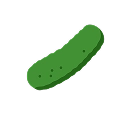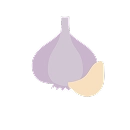-
Release Time:2025-06-18
-
Source:利农机械
In the agricultural product market, sweet potatoes have always been a favorite among consumers due to their rich nutritional value and diverse cooking methods. For sweet potato growers, distributors, and food processing enterprises, how to scientifically and precisely sort the harvested sweet potatoes is the key to enhancing product competitiveness and maximizing economic benefits. Below is a detailed introduction on how to sort sweet potatoes, helping you stand out in the sweet potato market.
I. Accurately Grasp Pre - sorting Preparations to Lay a Foundation for Efficient Sorting
(A) Careful Selection of Venue and Equipment
Choosing a suitable sorting venue is of utmost importance. An ideal venue should be clean, well - ventilated, and dry, which can effectively prevent sweet potatoes from getting damp and moldy during the sorting process, thus ensuring their quality. Meanwhile, preparing the necessary sorting equipment is the core of improving sorting efficiency. Electronic scales can accurately weigh sweet potatoes, helping you precisely classify them by size. Grading screens can conduct a preliminary size - based screening, saving both manpower and time. Washing machines can remove dirt and impurities from the surface of sweet potatoes, allowing them to enter the subsequent sorting steps in a cleaner state. Packaging materials are used for the final packaging to protect sweet potatoes during transportation and storage. Reasonably configuring these equipment can make the sorting work more efficient.
(B) The Importance of Staff Training
The personnel involved in the sorting work are the direct executors, and their professional qualities directly affect the sorting quality and efficiency. Therefore, providing professional training for the staff is indispensable. The training content should cover the judgment criteria for the size, shape, color, and pests and diseases of sweet potatoes, as well as the operating procedures and precautions during the sorting process. Through training, staff members can get familiar with the sorting process, master accurate judgment methods, and ensure that each sweet potato is sorted fairly and accurately. At the same time, the training should emphasize the balance between sorting speed and quality, encouraging staff members to improve their sorting speed while ensuring quality. Only well - trained personnel can guarantee the accuracy and consistency of the sorting work and enhance the overall quality and sorting efficiency of the products.
(C) Practical Strategies for Improving Sorting Efficiency
Optimize Equipment Layout
Arrange the equipment reasonably according to the sorting process. For example, place the grading screen at the entrance where sweet potatoes are introduced for quick preliminary size - based screening. Position the electronic scale next to the grading screen to facilitate timely weighing of the screened sweet potatoes. The washing machine can be set up after the weighing step to clean the sweet potatoes. Finally, there is the packaging area. A reasonable equipment layout can reduce the handling distance and time of sweet potatoes between different steps, thus improving the overall sorting efficiency.Establish a Standardized Process
Develop a detailed and standardized sorting process, clearly defining the operating steps and time nodes for each step. For instance, specify the time for screening sweet potatoes with the grading screen and the average time for each staff member to conduct a manual re - inspection of a sweet potato. Let the staff strictly follow the process to avoid chaos and repetitive work, thereby improving the sorting efficiency.Adopt a Team - based Collaboration Model
Divide the sorting work into different task teams, such as a grading team, a re - inspection team, and a weighing and packaging team. Each team is responsible for a specific task, and members cooperate closely to form an assembly - line operation. This not only improves work efficiency but also reduces delays caused by individuals' unfamiliarity with operations.Introduce an Incentive Mechanism
Set up a reasonable incentive mechanism to reward staff members with high sorting efficiency and good quality, such as bonuses and honorary certificates. This can stimulate the work enthusiasm and initiative of the staff, prompting them to continuously improve the sorting efficiency.
II. Define Clear Sweet Potato Sorting Standards to Ensure High Quality
(A) Precise Classification by Size
The size of sweet potatoes is one of the important bases for sorting. According to market demand and customer requirements, sweet potatoes are classified into different grades such as extra - large, large, medium, and small. Generally, extra - large sweet potatoes weigh more than [X] grams, large ones weigh between [X - Y] grams, medium ones weigh between [Y - Z] grams, and small ones weigh less than [Z] grams. Sweet potatoes of different sizes are suitable for different sales channels. For example, extra - large and large sweet potatoes with a full appearance are suitable for retail channels such as supermarkets and farmers' markets, attracting consumers' attention. Medium and small sweet potatoes can be used for food processing, such as making sweet potato starch, dried sweet potatoes, or as feed to meet the needs of different customers.
(B) Strict Control of Appearance Quality
Shape
High - quality sweet potatoes should have a regular shape, such as an oblong or spindle shape, without deformities, cracks, or damage. Deformed sweet potatoes not only affect the appearance but may also be more prone to damage during storage and transportation, reducing the product's quality and value.Color
The skin of sweet potatoes should be smooth and brightly colored, without black spots, brown spots, mold, or other flaws. Sweet potatoes of different varieties have different colors, but in general, sweet potatoes with a uniform color and luster are more likely to attract consumers' purchasing desire and are more competitive in the market.Pests and Diseases
Carefully check the surface of sweet potatoes for traces of insect eyes, borer holes, and other pest and disease marks. Sweet potatoes with pests and diseases not only have reduced quality but may also carry pathogens, affecting the storage and sales of other sweet potatoes and even posing potential threats to consumers' health. Therefore, sweet potatoes with pests and diseases must be strictly removed.
(C) Comprehensive Consideration of Internal Quality
Taste
Although it is difficult to directly judge the internal quality during sorting, it can be guaranteed through variety selection and cultivation management. Generally, sweet potatoes with high starch content and a powdery and glutinous taste are suitable for cooking methods such as boiling and steaming, meeting consumers' needs for traditional sweet potato dishes. Sweet potatoes with high sugar content and a sweet taste are more suitable for baking, producing fragrant and delicious baked sweet potatoes that are very popular among consumers.Freshness
Fresh sweet potatoes have a firm texture and a certain elasticity when gently pressed with the hand. If a sweet potato has a soft texture and an unpleasant odor, it means it is no longer fresh and should not be sorted as a high - quality product. Freshness is an important factor in ensuring the taste and quality of sweet potatoes and is also a key concern for consumers.
III. Standardize the Sorting Process to Improve Efficiency and Quality
(A) Rapid Grading in Preliminary Screening
Pour the harvested sweet potatoes into the grading screen and conduct a preliminary size - based screening. The aperture of the grading screen can be adjusted according to the predetermined sorting specifications to collect sweet potatoes of different sizes into different containers. This step can quickly remove sweet potatoes that obviously do not meet the specifications, reducing the workload of subsequent manual re - inspections and improving the sorting efficiency.
(B) Strict Manual Re - inspection
The sweet potatoes that have undergone preliminary screening need to be subject to a manual re - inspection to further check their appearance quality. Staff members should carefully examine the shape, color, and the presence of pests and diseases of the sweet potatoes and remove those that do not meet the standards. During the re - inspection, strict adherence to the sorting standards should be followed, leaving no detail unchecked to ensure that each selected sweet potato meets the quality requirements.
(C) Orderly Weighing and Packaging
Weigh the sweet potatoes that have passed the re - inspection according to different specifications and pack them into corresponding packaging bags or boxes. The packaging should be labeled with information such as the variety, specification, weight, and origin of the sweet potatoes to facilitate consumers' identification and selection. At the same time, attention should be paid to the sealing and moisture - proof properties of the packaging to ensure the quality of sweet potatoes during storage and transportation. Standardized packaging not only enhances the product's image but also increases consumers' trust.
IV. Attach Importance to Post - sorting Handling to Ensure the Product's Sustained Competitiveness
(A) Scientific and Reasonable Storage Management
The sorted sweet potatoes should be properly stored to avoid direct sunlight and high - temperature and high - humidity environments. The storage temperature should be controlled within [specific temperature range], and the relative humidity should be maintained at around [specific humidity range]. Regularly check the storage condition of sweet potatoes and promptly remove problematic ones to prevent the spread of pathogens. Scientific storage management can extend the freshness period of sweet potatoes and ensure a continuous supply of products in the market.
(B) Timely Follow - up on Sales and Feedback
Promptly introduce the sorted sweet potatoes to the market and set reasonable sales prices according to different specifications and qualities. At the same time, actively collect customers' feedback to understand market demand and consumers' evaluations of the quality of sweet potatoes. Through customer feedback, continuously improve the sorting standards and cultivation management methods to enhance product quality and market competitiveness. Timely follow - up on sales and feedback can help you better grasp market dynamics, adjust business strategies, and achieve the sustainable development of the sweet potato industry.
Sweet potato sorting is a systematic and meticulous task. Every step, from pre - sorting preparations, the formulation of sorting standards, the implementation of the sorting process to post - sorting handling, is crucial. Only by strictly controlling each step can we ensure that the sorted sweet potatoes are of high quality, meet market demand, and occupy a place in the fierce market competition. I hope the above sweet potato sorting methods can be helpful to you and make your sweet potato business more and more prosperous!
SEO Optimization Points Explanation
Keyword Layout: Reasonably embed keywords such as "sweet potato sorting", "sweet potato size classification", "sweet potato appearance quality", "sweet potato sorting process", and "improve sweet potato sorting efficiency" in the title, opening, closing, and various paragraphs to improve the article's relevance in search engines.
Content Quality: Provide detailed and practical sweet potato sorting methods and standards, and add practical strategies for improving sorting efficiency. The content is rich and instructive, meeting users' needs for sweet potato sorting knowledge and increasing user dwell time and page view depth.
Clear Structure: Adopt a structure of overall - part - overall and set sub - headings to make the article well - organized, easy for users to read and understand, and also in line with search engines' judgment criteria for high - quality content.
User Experience: Use simple and easy - to - understand language, avoiding overly professional terms, so that readers of different levels can easily master sweet potato sorting skills and improve the user experience.













